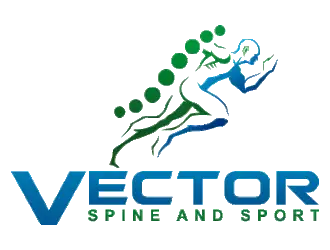How Evidence-Based Chiropractic Care Helps You Move Better and Feel Better—Fast
Neck pain has a way of sneaking into daily life. It may start after a car accident, slowly build from long hours at a computer, or show up without a clear reason at all. At first, it’s easy to ignore — a stiff morning here, a sore afternoon there. But over time, that discomfort can turn into persistent pain, limited movement, headaches, or even numbness and tingling in the arms or hands.
The good news? Neck pain does not have to be your new normal.
At Vector Spine and Sport in Murray, Utah, we help patients every day who assumed neck pain was something they just had to live with. Using an evidence-based approach, we focus on restoring motion, reducing inflammation, and helping your body recover — not just temporarily masking symptoms.
Why Neck Pain Is So Common
The cervical spine is designed for movement, but modern life often works against it. Prolonged sitting, forward head posture, repetitive screen use, and stress all place strain on the joints, discs, and muscles of the neck. Add a sudden trauma like a car accident or fall, and the tissues can become irritated very quickly.
Common contributors to neck pain include:
- Poor posture and “tech neck”
- Whiplash from auto accidents
- Joint stiffness and restricted motion
- Muscle tension and trigger points
- Disc irritation or degeneration
- Chronic stress and muscle guarding
When movement is restricted or tissues become inflamed, the body compensates — often leading to worsening pain over time rather than improvement.
Why Rest and Medication Often Aren’t Enough
Many people try to manage neck pain with rest, over-the-counter medications, stretching, or massage alone. While these approaches may provide short-term relief, they often don’t address the underlying mechanical problem — joint restriction, poor movement patterns, or unresolved inflammation.
Without restoring proper motion and function, symptoms tend to return, sometimes more intensely than before.
That’s where chiropractic care comes in.
An Evidence-Based Approach to Neck Pain Relief
At Vector Spine and Sport, Dr. Jacob Reesor uses current research and clinical best practices to guide care. Chiropractic treatment focuses on improving how the joints of the neck move, reducing irritation to surrounding tissues, and supporting the body’s natural healing processes.
Care typically includes:
- A thorough exam to identify the source of pain
- Gentle chiropractic adjustments to restore joint mobility
- Soft tissue techniques to reduce muscle tension
- Movement and posture guidance to prevent recurrence
- At-home exercises tailored to your specific needs
This approach helps address why the pain started — not just where it hurts.
Neck Pain After a Car Accident
Even minor car accidents can place significant force on the neck. Whiplash injuries often don’t feel severe immediately, but symptoms can appear days or weeks later. Stiffness, headaches, and reduced range of motion are common signs that the neck hasn’t fully recovered.
In Utah, chiropractic care for auto injuries is typically covered under Personal Injury Protection (PIP) insurance — often with no out-of-pocket cost. Early evaluation and treatment can significantly improve recovery and reduce the risk of chronic pain.
Moving Better Is the First Step to Feeling Better
When neck joints move properly and muscles are functioning as they should, inflammation decreases, circulation improves, and pain often fades. Patients frequently report:
- Improved range of motion
- Reduced stiffness and tension
- Fewer headaches
- Better posture
- Greater comfort at work and during daily activities
Most importantly, they regain confidence in their ability to move without fear.
Start Your Recovery Today
If neck pain is interfering with your work, sleep, or quality of life, it’s time to address it — not ignore it.
At Vector Spine and Sport, we’re here to help you move better and feel better, using care rooted in evidence and tailored to you.
📍 Vector Spine and Sport — Murray, Utah
📞 801-456-0352










